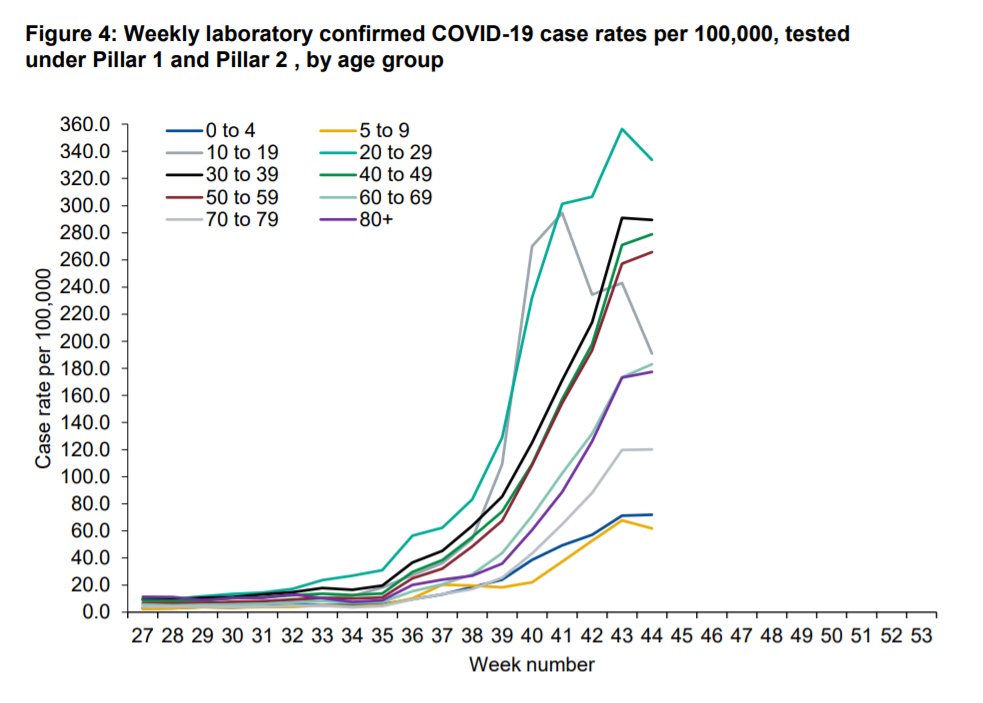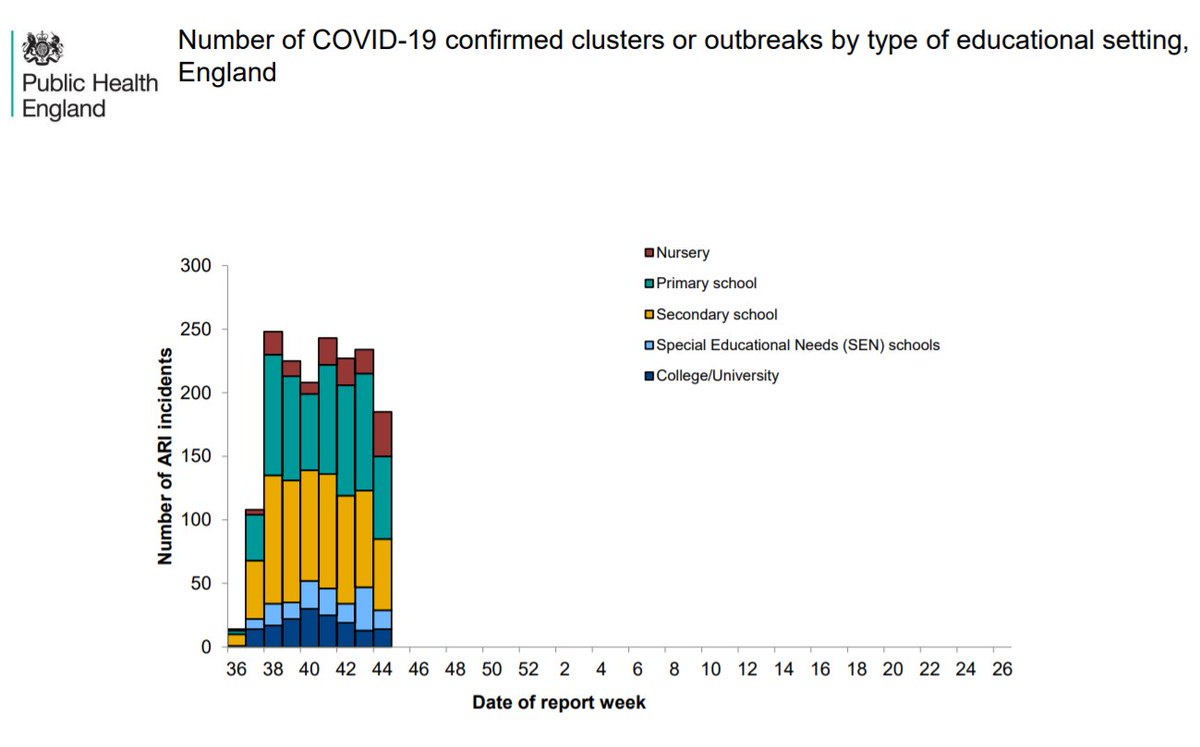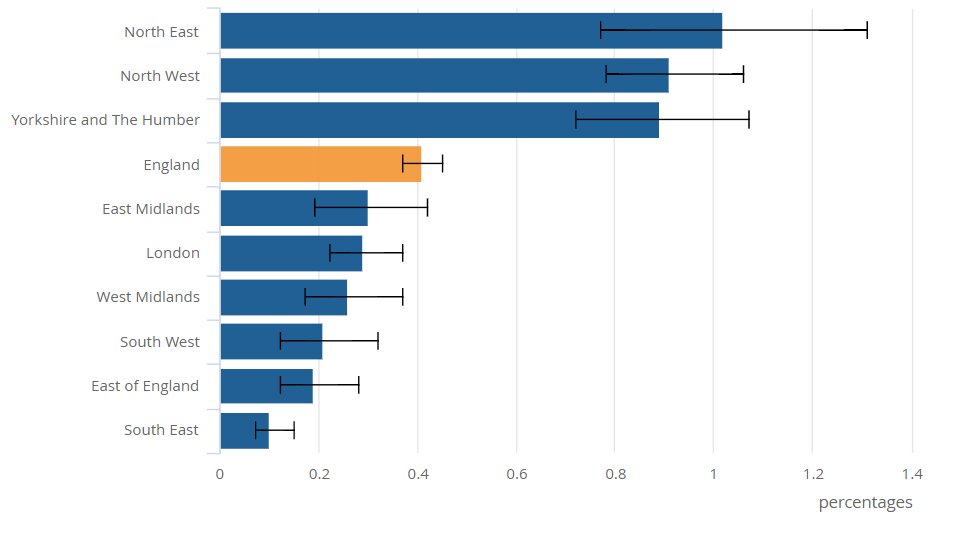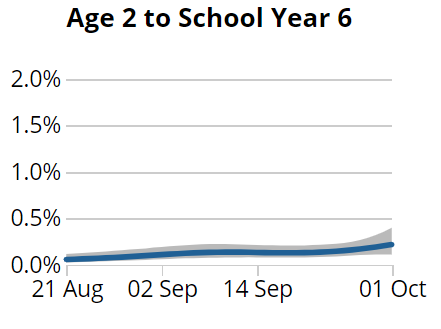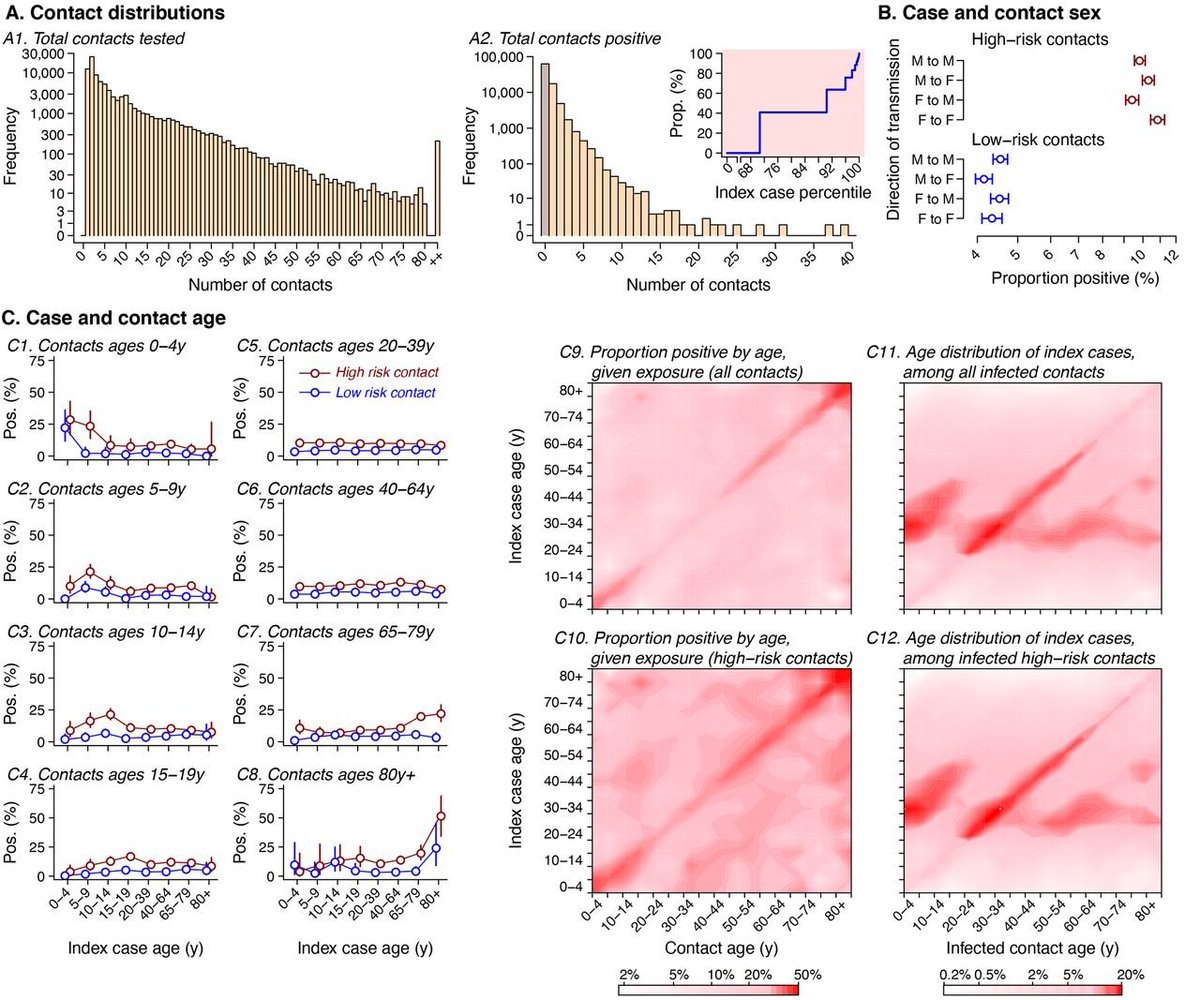
An absolute smorgasbord of data around children, schools and #COVID19 this week
We've got @PHE_uk , the @ONS survey, REACT study, and a new SAGE report!
Lets take a birds eye view of the key findings 🧵
1/17
We've got @PHE_uk , the @ONS survey, REACT study, and a new SAGE report!
Lets take a birds eye view of the key findings 🧵
1/17
First in @PHE_uk
Cases flattening in secondary age children after a sharp rise, rates still much lower in primary age
School outbreaks flat/declining (half term will have played a role here)
assets.publishing.service.gov.uk/government/upl…
2/17



Cases flattening in secondary age children after a sharp rise, rates still much lower in primary age
School outbreaks flat/declining (half term will have played a role here)
assets.publishing.service.gov.uk/government/upl…
2/17




Of course these tests are symptom based, and may miss cases due to lower symptom burden in children
Let's look at the UK's 2 big, random sample studies which overcome this issue!
3/17
Let's look at the UK's 2 big, random sample studies which overcome this issue!
3/17
First @ONS survey
Cases rose fast in secondary age children behind young adults, but appears to now be flat or falling in both
ons.gov.uk/peoplepopulati…
4/17
Cases rose fast in secondary age children behind young adults, but appears to now be flat or falling in both
ons.gov.uk/peoplepopulati…
4/17

On the other hand, in primary school aged children cases crept up behind, and now are lowest other than adults >50yrs and flat for a few weeks
Big difference in prevalence between age groups of "children" - very important
ons.gov.uk/peoplepopulati…
5/17
Big difference in prevalence between age groups of "children" - very important
ons.gov.uk/peoplepopulati…
5/17

Next the REACT study
This shows more or less the same, but with a decrease in prevalence in primary aged children in the most recent data
spiral.imperial.ac.uk/bitstream/1004…
6/17
This shows more or less the same, but with a decrease in prevalence in primary aged children in the most recent data
spiral.imperial.ac.uk/bitstream/1004…
6/17

Interestingly, in the adjusted model primary aged children have the lowest odds for testing positive in all periods
Secondary age children the second highest in most
Combination of biology and exposure/behaviour (contacts)
spiral.imperial.ac.uk/bitstream/1004…
7/17
Secondary age children the second highest in most
Combination of biology and exposure/behaviour (contacts)
spiral.imperial.ac.uk/bitstream/1004…
7/17

Now the SAGE report. Some repetition here so I've just picked out some of the most interesting things (please read it all!)
First, reassuringly reiterating no evidence so far of increased risks to teachers compared to other professions
gov.uk/government/pub…
8/17
First, reassuringly reiterating no evidence so far of increased risks to teachers compared to other professions
gov.uk/government/pub…
8/17

They note cases in children did increase after school openings, but that this followed behind increases in other age groups and that R was rising well before schools opened
This is consistent with experience in other countries
9/17

This is consistent with experience in other countries
9/17


I'm intrigued by the ONS household contact data, suggesting:
-rate of children bringing infection into homes increased
-children much less susceptible to catching infection
I'm sure both are true, but the effect sizes seem implausible; likely some misclassification bias
10/17
-rate of children bringing infection into homes increased
-children much less susceptible to catching infection
I'm sure both are true, but the effect sizes seem implausible; likely some misclassification bias
10/17

On the above point, I'm disappointed there is no methodology for the data provided as we have seen household contact data is strikingly difficult to interpret
Hopefully it will be forthcoming and provide further insight
11/17
Hopefully it will be forthcoming and provide further insight
11/17
They wisely mention the difficulty separating risks of being *in school* from the end to end activities related (including transport), and mixing which occurs outside of school
12/17
12/17

It goes on to review school studies in more detail (largely done during periods of much lower prevalence, which is less relevant to today)
I have covered most of this previously so won't do so again now
I will however look at one last thing
13/17
I have covered most of this previously so won't do so again now
I will however look at one last thing
13/17
We've seen big, age related differences in rates of infection
It shouldn't be a surprise as we've seen it before, however some proposed it was merely due to school closures
Schools are fully open, and there's still big differences between younger children and adolescents
14/17
It shouldn't be a surprise as we've seen it before, however some proposed it was merely due to school closures
Schools are fully open, and there's still big differences between younger children and adolescents
14/17
Looking at contact rates between age groups, there is no real difference
The most likely explanation, as previously suggested, is reduced susceptibility to infection of younger children (for example, under 12y) which increases with age
gov.uk/government/pub…
15/17
The most likely explanation, as previously suggested, is reduced susceptibility to infection of younger children (for example, under 12y) which increases with age
gov.uk/government/pub…
15/17

Some concluding thoughts:
-Children are clearly susceptible to infection and can transmit
-In periods of high prevalence, teenagers are a much bigger transmission risk than younger children
-Schools will contribute to some degree, but it is unclear to what extent
16/17
-Children are clearly susceptible to infection and can transmit
-In periods of high prevalence, teenagers are a much bigger transmission risk than younger children
-Schools will contribute to some degree, but it is unclear to what extent
16/17
-Harms of school closure are huge and should be a last resort
-Infection prevention measures can be increased if needed (e.g. masks now used in secondary schools)
-Interventions in primary schools likely low yield and more harmful
17/17
-Infection prevention measures can be increased if needed (e.g. masks now used in secondary schools)
-Interventions in primary schools likely low yield and more harmful
17/17
• • •
Missing some Tweet in this thread? You can try to
force a refresh

